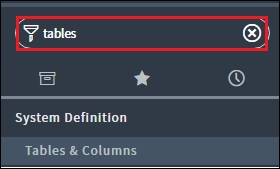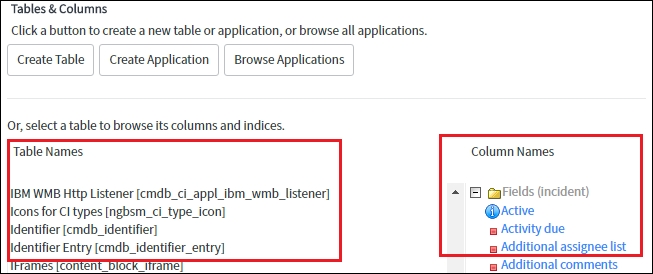Service-Now is an enterprise-level system and it has its own data mode. Through the schema map, you can understand tables and their relationships in a visual manner.
To step through this recipe, you should have active an Service-Now instance, valid credentials, and admin role.
Open any standard web browser.
Type the Service-Now instance web address (
https://{instance_name}.service-now.com) provided by your company in the address bar. Now, enter your credentials in respective fields.On the left-hand side, in the search box, type
tables, and Service-Now will search for Tables & Columns, as shown here:
Tables & Column module
Under System Definition, click on the Tables & Columns module. After clicking on it, you will able to view the following screen, where you will able see all the tables and columns of the system:

Tables and column module's sections
If you click on any column name field, you can even see Column...



